Author: Marshall Schott
It wasn’t until nearly a decade after I started brewing that I realized I enjoyed beers that possessed a more assertive acidity compared to the standard lagers and ales I’d been making. While the word “sour” was once squirm inducing, these days I consider myself among the growing group of trend-following craft beer nerds who pine for the pucker.
One of my favorite sour styles is the eponymous Berliner Weisse, which unlike other popular sour ales originating from Belgium, stems from Germany. With documented mentions stretching as far back as the 16th century, it’s safe to say Berliner Weisse is a classic style that has stood the test of time, and for good reason– it’s delicious!
A typical Berliner Weisse relies on a simple grist of Pilsner malt and a good portion of wheat, which leaves the beer characteristically hazy with essentially no hop character. The tartness is produced by lactic acid bacteria (LAB) that can be introduced in various ways including pure lab cultures, probiotics, and unmilled malt. With its restrained ABV that hovers in the 3% range and spritzy carbonation, Berliner Weisse is a supremely refreshing beer that, when consumed on its own, tastes of tangy bread dough, though was traditionally blended with other complementary flavorings.
As a fan of lower alcohol beers that pack a lot of flavor, Berliner Weisse was quick to become a favorite of mine after trying my first commercial example nearly 6 years ago. After a couple failed experimental attempts, I finally made a batch that turned out quite delicious and received positive reviews from a group of my critical friends, which was rather motivating. But xBmts to brew, articles to write, and podcasts to record, I kept putting off making another one. Then, when the time was right, I realized I’d used up all my wheat malt, so I figured I’d replace it with a grain that gets used by brewers for many of the same reasons.
| Brewing Kettle Sour Berliner Weisse Mit Hafer |
I’d been wanting to brew a Berliner Weisse for awhile and already had a recipe set when I finally decided to do it. Some local brewing friends had expressed interest in getting a hands-on look at the new Ss Brewtech eBrewing system, so I figured I’d show them how it works during an xBmt data collection session. It was only after the water was heating up that I noticed my wheat bin was empty, so I went with the next closest thing I had on-hand– flaked oats.
Berliner Weisse Mit Hafer
Recipe Details
| Batch Size | Boil Time | IBU | SRM | Est. OG | Est. FG | ABV |
|---|---|---|---|---|---|---|
| 5.5 gal | 1 min | 3.6 IBUs | 2.8 SRM | 1.031 | 1.007 | 3.1 % |
| Actuals | 1.031 | 1.01 | 2.7 % | |||
Fermentables
| Name | Amount | % |
|---|---|---|
| Lamonta American-style Pale Malt (Mecca Grade) | 4.25 lbs | 68 |
| Oats, Flaked | 2 lbs | 32 |
Hops
| Name | Amount | Time | Use | Form | Alpha % |
|---|---|---|---|---|---|
| Magnum - 4 tiny pellets | 2 g | 60 min | Boil | Pellet | 12.9 |
Yeast
| Name | Lab | Attenuation | Temperature |
|---|---|---|---|
| Harvest (L17) | Imperial Yeast | 72% | 50°F - 60°F |
Notes
| Water Profile: Ca 4 | Mg 1 | Na 10 | SO4 6 | Cl 2 |
Download
| Download this recipe's BeerXML file |
Prior to participants arriving to my “lab,” I collected the entire volume of water for a traditional BIAB batch then turned the element on to heat it up.
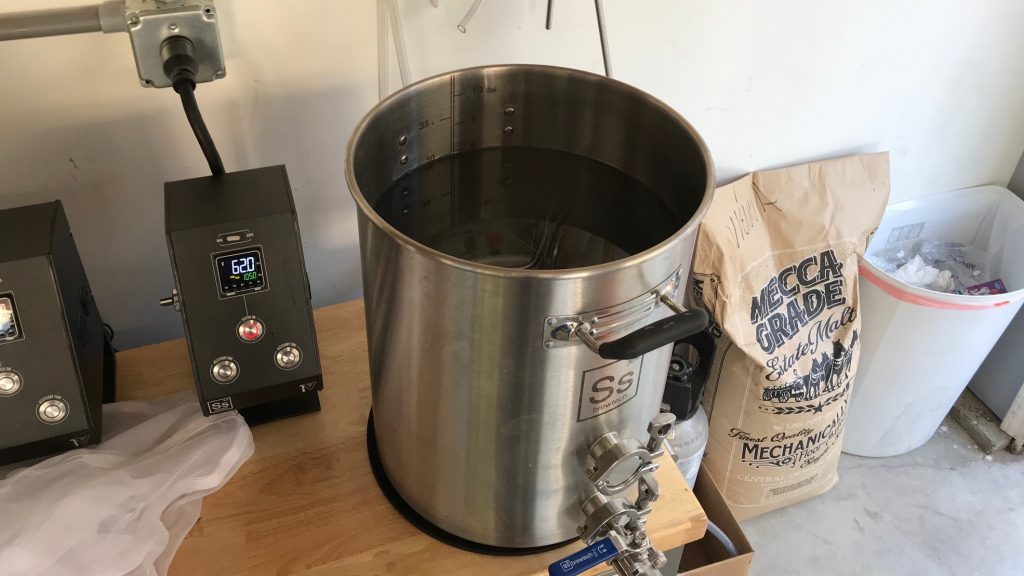
My buddy, Tony Clark, helped me weigh out and mill the relatively small amount of malt directly into a BIAB fabric filter. The flaked oats did not go through the mill.
Once strike temperature was reached, homebrewer Roger Gardenhire lowered the grains into the water and gave it a quick stir to incorporate.
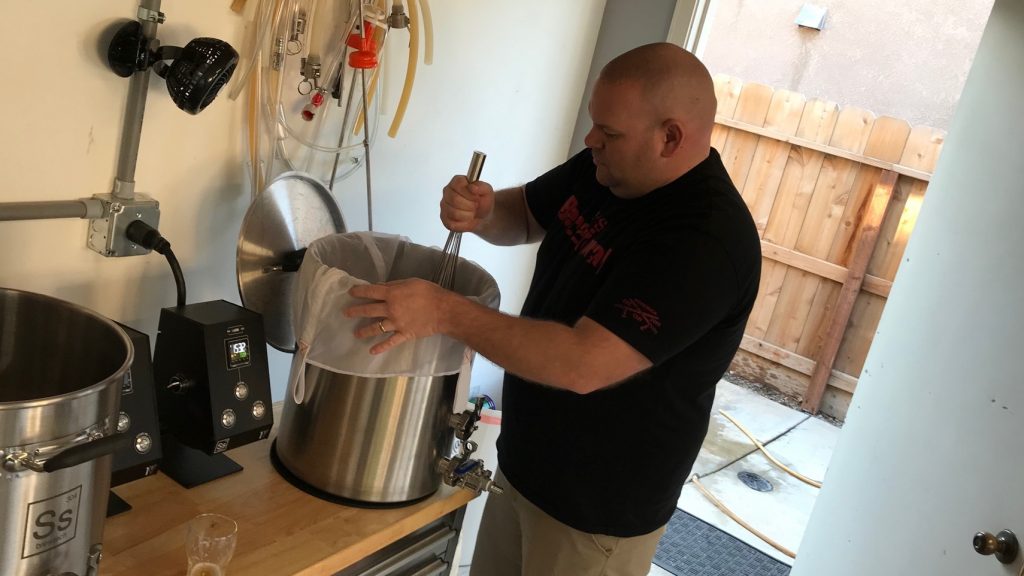
A check of the mash temperature confirmed we were right where we wanted to be.
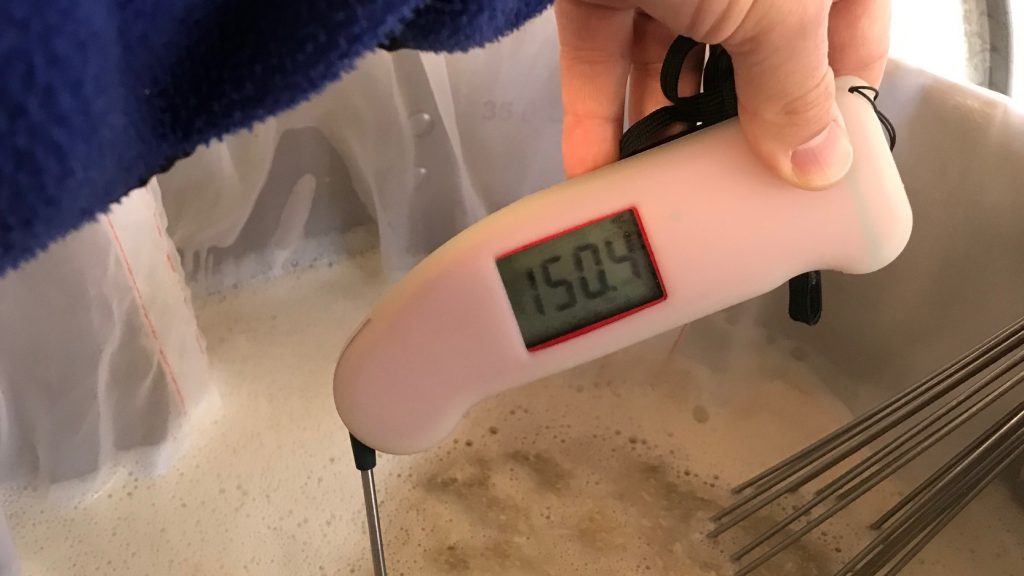
The mash rested while triangle tests were completed. After 60 minutes, the grains were removed and the wort was brought to a contaminant killing boil, which James Thornburgh helped to manage.
During the boil, beer reviewer extraordinaire, Tim Meisch, added the minuscule kettle hop addition… unnecessary, but we were drinking…
More data was collected during the 15 minute boil, after which the power was cut and Rick Davis took a refractometer reading showing the wort was right at target OG.

For fun, and because it was pretty nippy outside, I skipped chilling with my IC and instead allowed the wort to cool down on its own. This was loosely inspired by the practice of using a koelschip to chill (and inoculate) wort by Flemish sour beer brewers. I hastened the process a bit by pointing a portable fan directly at the wort and stirring every 20-30 minutes.
It took about 2 hours for the wort to drop to 111°F/44°C, which is when I proceeded with inoculation. Given my prior success adding un-crushed grain directly to wort, and having no other source of LAB available, that’s that route I chose for this beer. I added out about 1 cup/237 mL of whole Pilsner malt to a sanitized mesh bag, tied the top off, then tossed it into the warm wort.
I set the controller to maintain the wort at 95°F/35°C for the duration of the souring period. While I did not cover the surface of the wort, I covered the seam between the lid and the kettle with some cling wrap only to keep any tiny critters out.
I stole a small sample after 18 hours and was pleased with the flavor development, though felt the acidity wasn’t quite there. At the 36 hour mark, the perceptible tartness was stronger, so I took a reading showing the wort was at 3.3 pH.
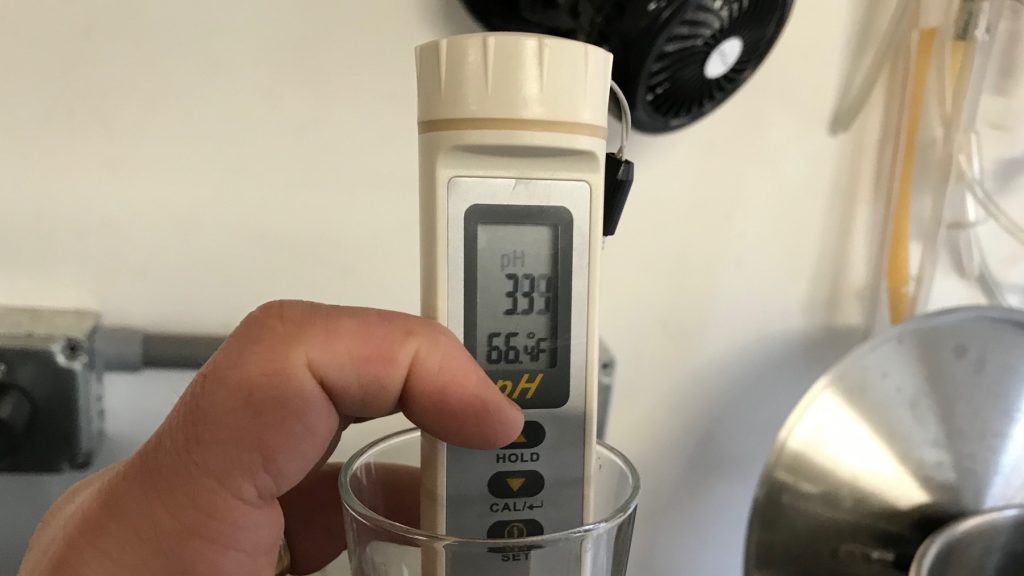
Pleased with the flavor, I removed the bag of souring grains and performed a second boil to kill off the LAB and any other microrganisms that may have made their way into the wort.
At the end of this brief 10 minute boil, I quickly chilled the wort with my IC before taking a refractometer reading showing very little change in OG since before souring.
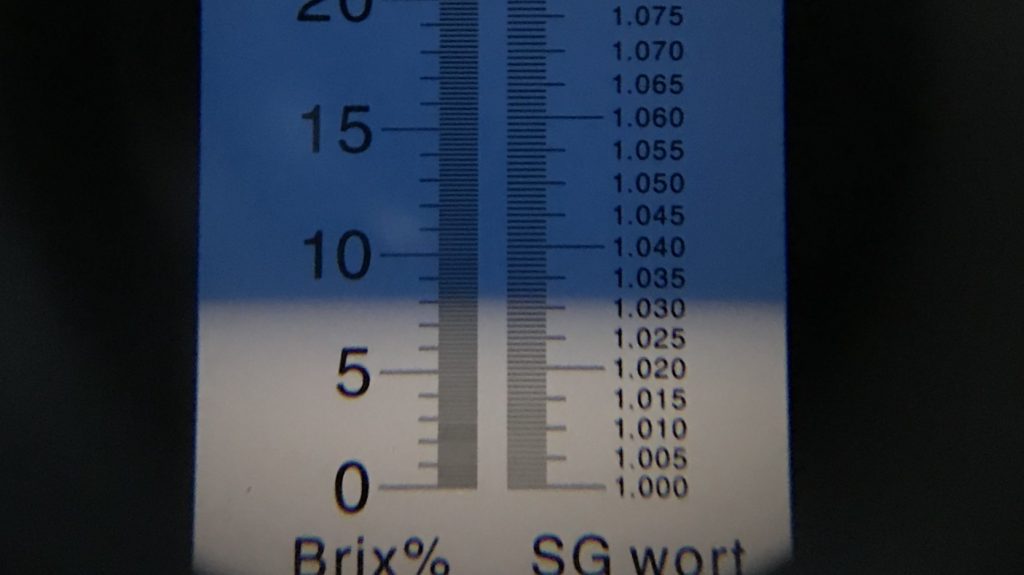
The wort was then transferred to a sanitized fermentation vessel.
My fermentation chamber was full at the time, but my garage was maintaining a fairly stable 60°F/16°C give or take, so I left the fermentor on my brew cart. Following consultation with the rest of the crew, I settled on using Imperial Yeast L17 Harvest in order to keep the fermentation character as clean as possible.
Due to the low OG, fermentation activity had all but halted within 3 days of pitching, so I took an initial hydrometer measurement showing 1.010 SG. I let the beer sit another few days before taking a second measurement that confirmed FG had been reached.
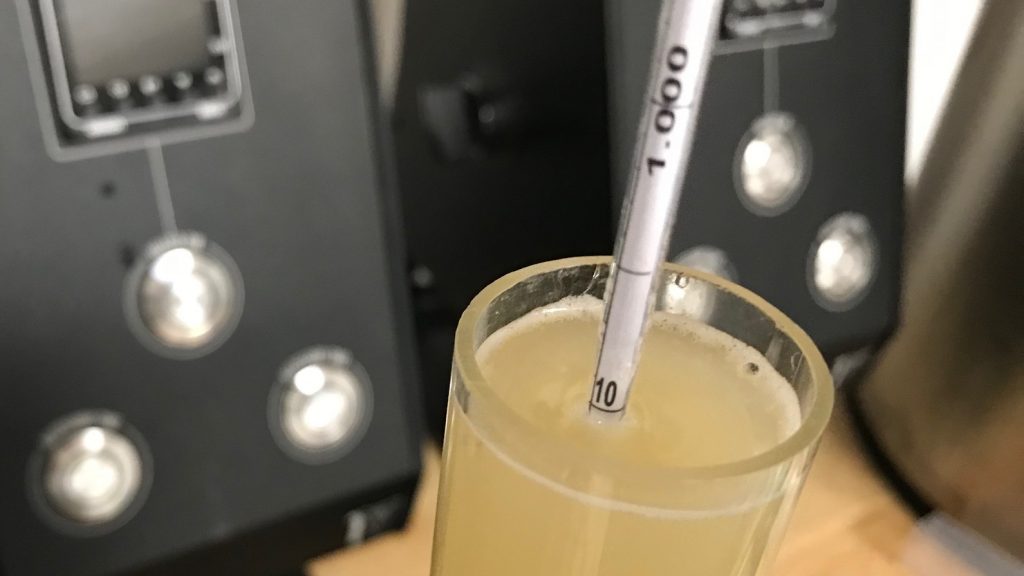
Too busy to package immediately, the beer was left alone for a few more days before I transferred it to a sanitized keg.
The filled keg was placed in my keezer and burst carbonated. Because I prefer my Berliner Weisse to be fairly sparkling, I hit it with 45 psi of CO2 for 20 hours before reducing the gas to 14 psi for serving. Within just a few days of kegging, the beers was fizzy and ready to drink.
| IMPRESSIONS |
In no way do I consider myself an expert on sour beer, all I know is that I’ve come to appreciate the characteristic tartness present in these styles. In my experience with commercial examples of Berliner Weisse and versions made by other homebrewers using lab cultures, the acidity tends to be rather clean and assertive. While my Berliner Weisse Mit Hafer certainly possessed an unmistakable sour character, it came across as being less sharp and more rounded, in a way that was really quite pleasant.
In considering possible reasons for this smoother tartness, I couldn’t help but wonder about the impact using flaked oats in place of wheat might have had. I know of many brewers who perceive beers made with large portions of wheat as having a slight sharp, almost tart-like characteristic to them, which is something I’ve certainly experience as well. Perhaps the flaked oats simply allowed the lactic acid to present itself differently, whereas the same beer made with wheat would have had a notably sharper edge to it.
Regardless, I was very pleased with the way this Berliner Weisse turned out. From what I presume is a function of souring with un-crushed grain, the beer had a subtle funk to it that made it fun and interesting to drink, while the higher carbonation level combined with the lower OG gave the impression of dryness. But it definitely wasn’t thin bodied, likely due to the beta glucan contributed by the flaked oats. To me, the flavor was reminiscent of the very middle piece of a cinnamon roll sans the cinnamon and sugar, delightfully doughy with toasty notes to back it up.
I shared this beer with some friends to get their feedback and most shared similar thoughts. One person who’s particularly fond of sour beer described it as being “cleaner” than he expected, “but not in a bad way,” explaining he felt it made the beer more approachable. I sought feedback from one Tim Mesich, beer reviewer extraordinaire, who said:
That’s a sour, but it’s not as sour as other sours I’ve had… it’s like, yeah, it’s nice, just a little sour, like sour water or something, I could drink a lot of this.
Finally, I poured up a sample for a dude who usually only drinks when the mountains are blue:
What the hell is this shit? Oh my god, who would put that in their mouth?! There’s a reason they stopped making this in the 16th century.
After explaining to Derek that Berliner Weisse was still being produced today, it occurred to me that this really was a success!
If you have thoughts about this recipe or experience making Berliner Weisse yourself, please feel free to share in the comments section below!
Support Brülosophy In Style!
All designs are available in various colors and sizes on Amazon!
Follow Brülosophy on:
FACEBOOK | TWITTER | INSTAGRAM
If you enjoy this stuff and feel compelled to support Brulosophy.com, please check out the Support page for details on how you can very easily do so. Thanks!


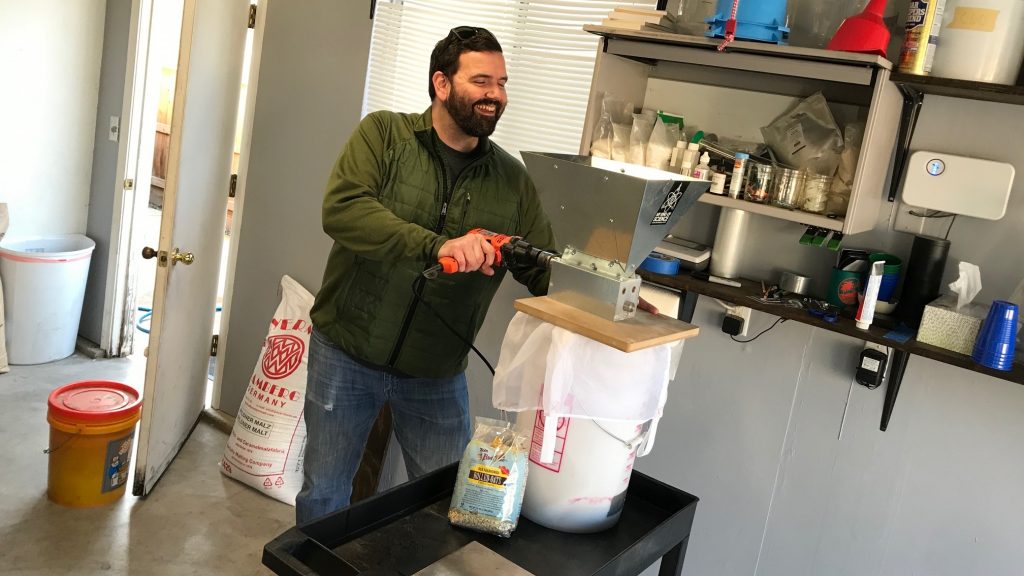
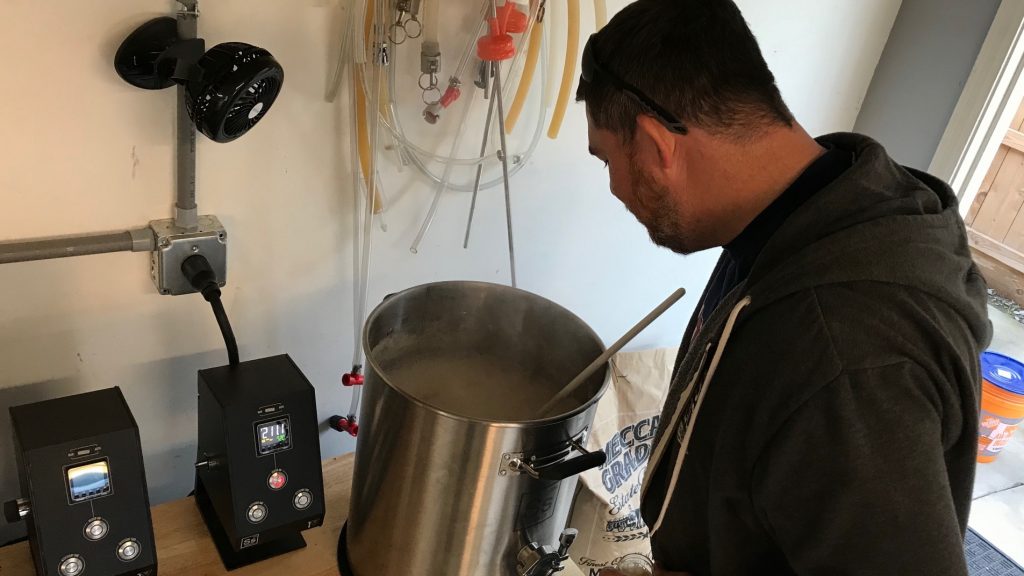
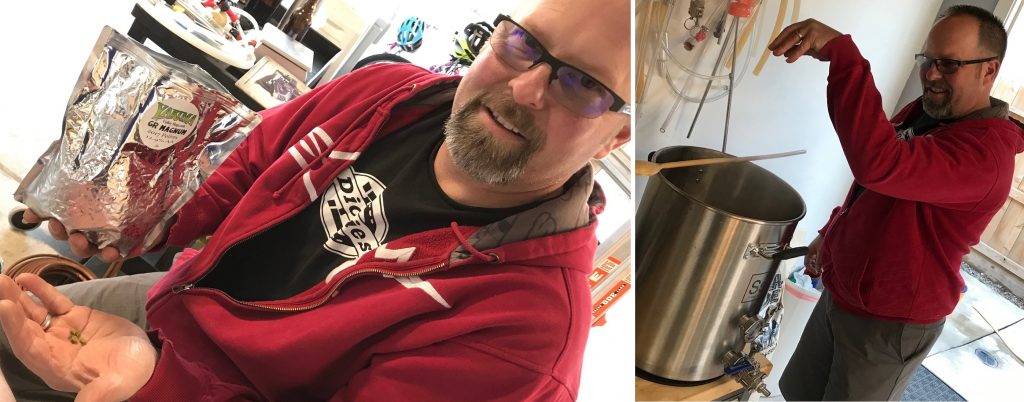
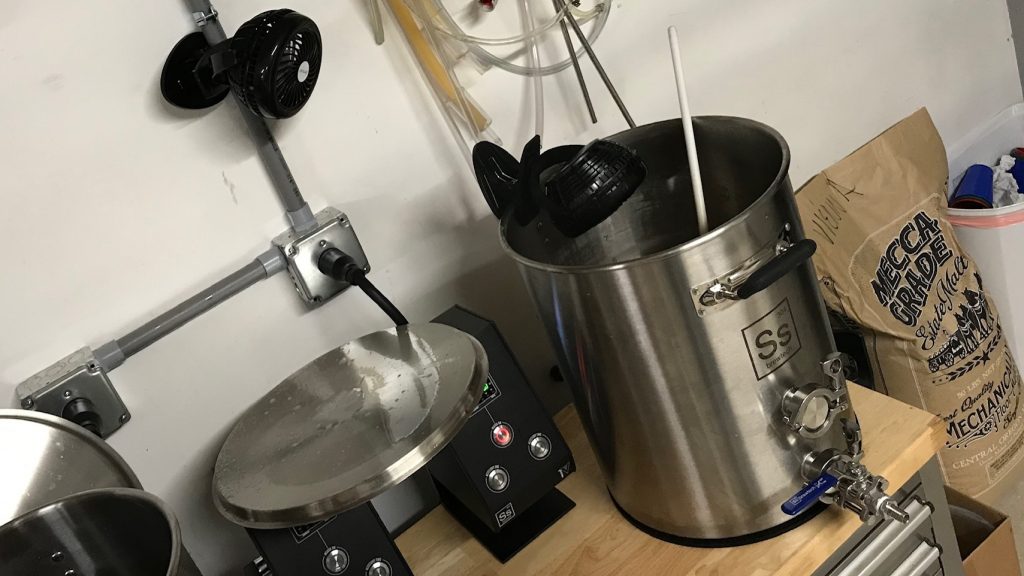
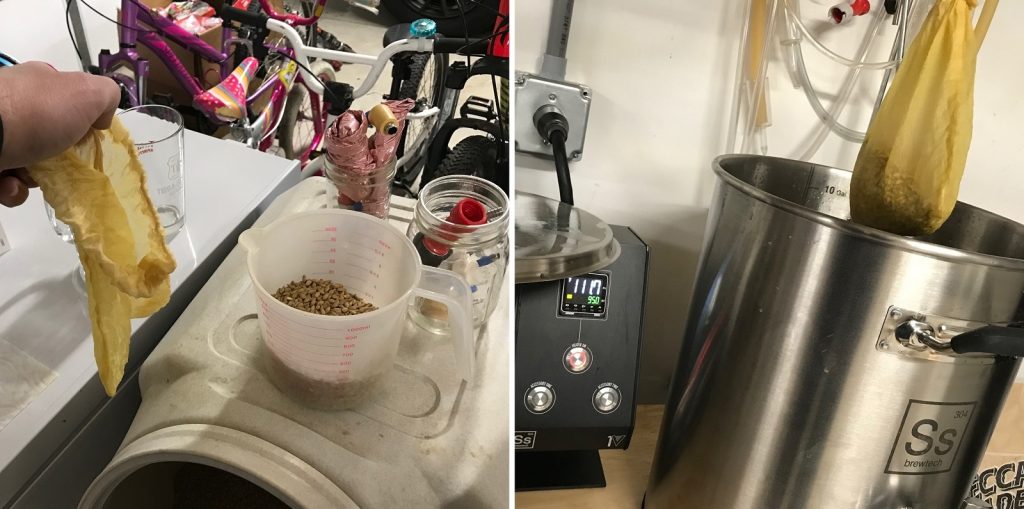
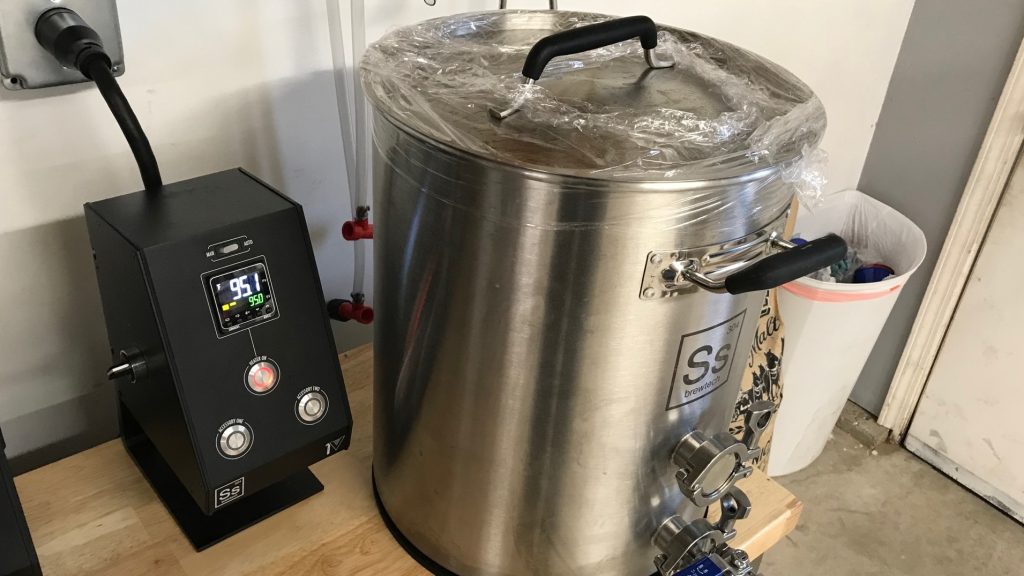
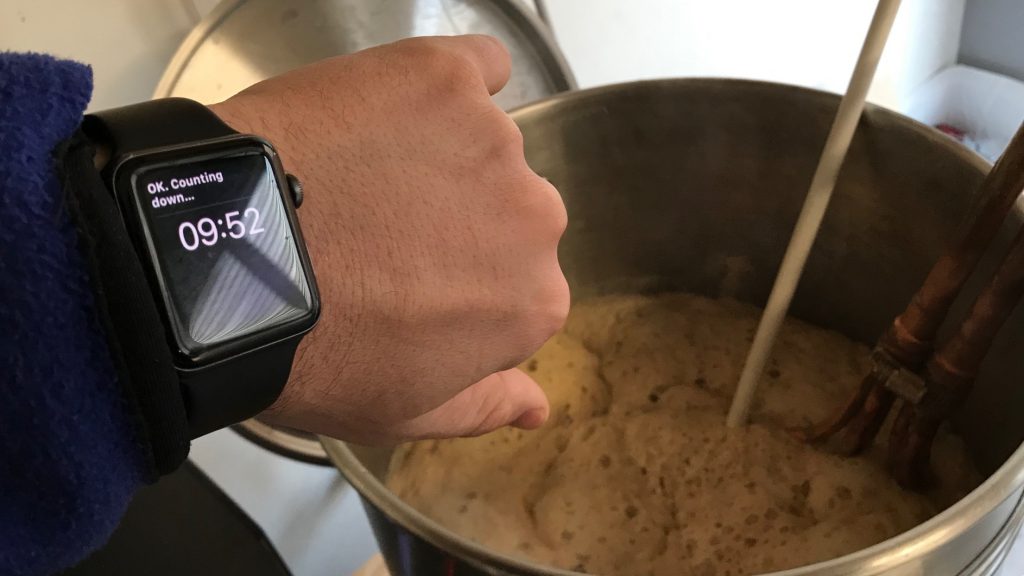
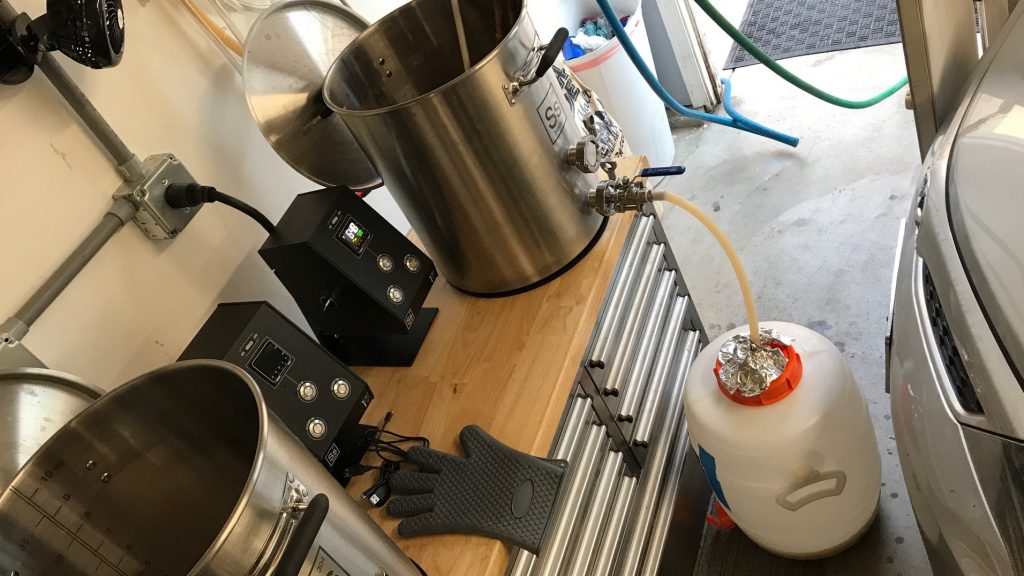
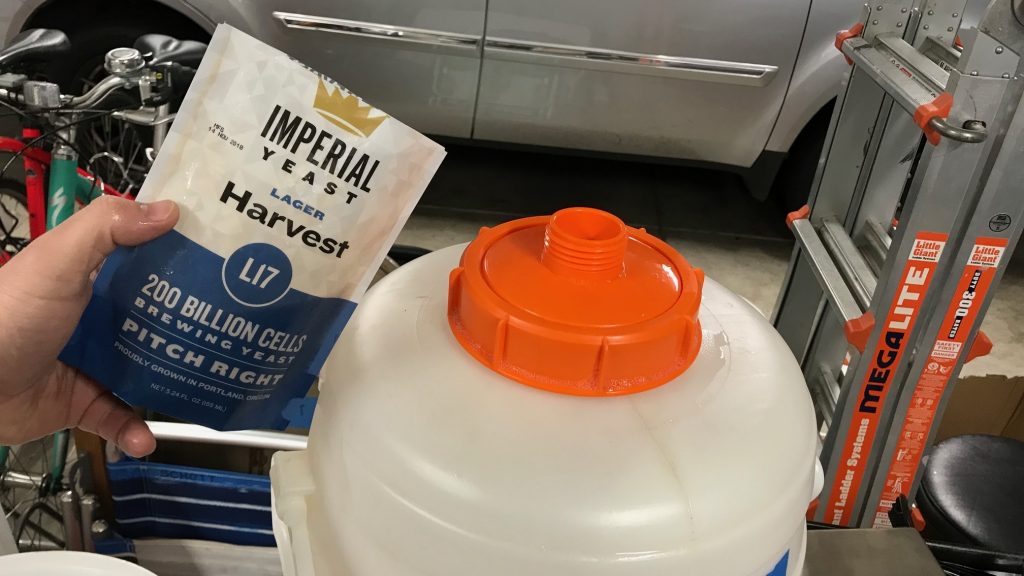
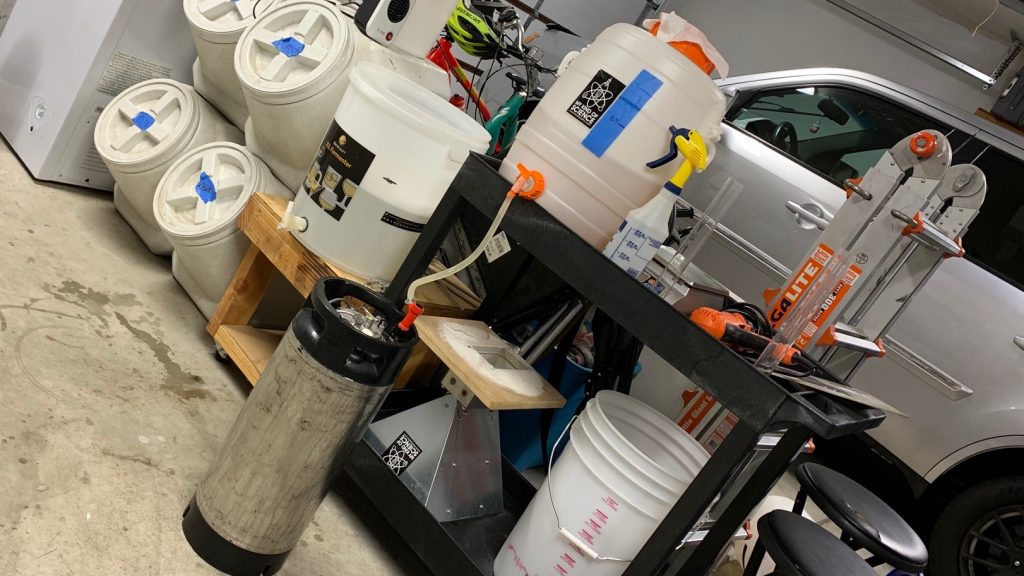
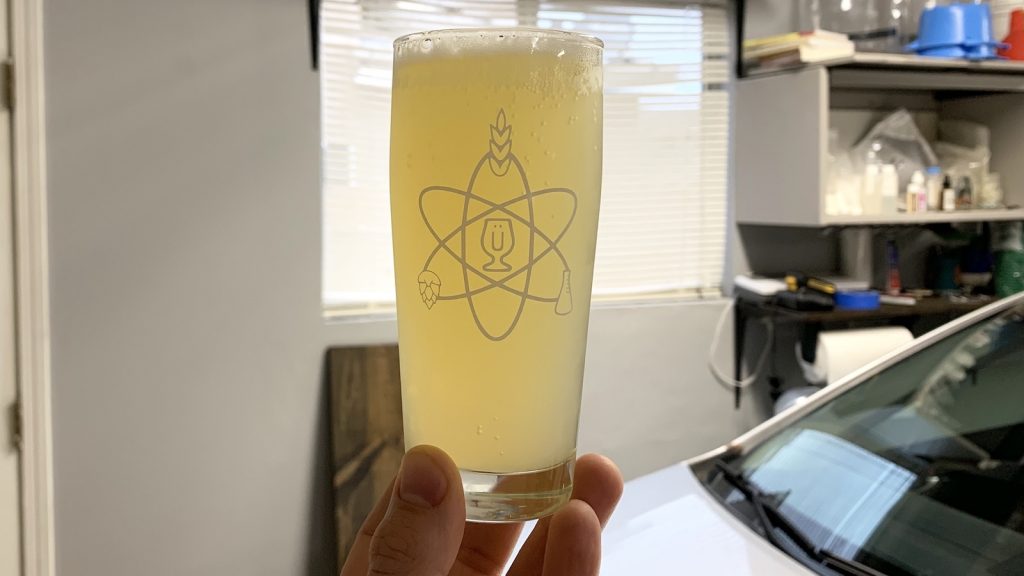










26 thoughts on “Short & Shoddy | Kettle Sour Berliner Weisse Mit Hafer”
I burned myself out on tart beers a while back, but that picture of the glass just looks delicious.
how many batches have you soured with uncrushed malt? none tasted like rot? why uncrushed? looks very tasty!
The first time I played around with souring with grain, I had no clue what I was doing and screwed up. I did some learning and tried again, it worked great. Between then and now, I’ve messed around with the method numerous times on a smaller scale and have never gotten “rot,” though I know some people far prefer inoculating a starter first to make sure. To each their own!
Never made a sour beer, and do not claim to know anything about making sours. Question: I thought I heard Malcolm say on a podcast a while back to not add hops until after the souring has been completed? I also realize this was an extremely small amount of hops. Just curious about the process.
Side note: wrapping the seem of the pot, simple and I’m guessing extremely affective.
Yeah, that’s definitely one approach. Another is to not add hops at all. The idea is that LAB is hindered by the acids in hops. I wasn’t going to add any but thought the photo of Tim would be fun… this beer has zero hop character 🙂
I’ve been thinking of a kettle sour like this for a bit. Very simple idea. I may boost up the gravity a hair and then age it on peaches for a month before kegging.
Cool write up, There are easier methods of doing this, grains can give off Butyric Acid, but it seems like you got away with it. For more science on kettle souring, listen to our podcast. https://www.milkthefunk.live/podcast/2018/4/2/episode-004-kettle-souring-with-adi-hastings-from-omega-yeast-labs. we also have a podcast on BW also .
This write up is great. I was having trouble finding a commercial Berliner Weisse to try so I recently tried to make one on a smaller scale with the yogurt function on my wife’s Instant Pot. Made a 1 gallon extract batch with ~60% wheat /40% pils, soured with lacto delbreckii to pH of 3.0 in just 20h, and fermented with US05. Turned out great but not sure how well it represents the style. My last batch (Kölsch style) I pulled off some wort just after it hit a boil to sour 1 gallon of a normal batch then fermented with some extra WLP029 from the my starter. Looking forward to experimenting with this for a bit then scaling up to 5 gal when I find one I really like. Would love to see more write ups/exBEERiments/Podcasts on sours.
Yessssss I knew you were gonna do a kettle sour after you switched to electric! Can’t wait to replicate. Got the electrician coming by next week!
Oh hell yeah! I was just talking to the other guys about how switching to electric has made brewing not only feel more enjoyable, but in some way easier. You’ll love it!
I’ve heard of using de-bittered hops and also using low A/A hops and/or very small amounts of hops (as you did in your exbeeriment), and my question is why didn’t you add them into your second boil instead of the first one since it could (but didn’t) have an effect on LAB? Also, do you think that those hops you added had anything to do with preventing the production of butyric acid?
Given the laughably tiny amount of hops I used, I wanted to take advantage of my friend Tim while he was present, hence the reason I added them pre-sour. I really don’t think the AA was enough to hinder butyric development, but I could be wrong.
“complimentary flavorings” Gosh, Marshall, not you 😀 You meant complementary, didn’t ya? —although arguably, the syrups they use are offered free of charge 🙂
Great to see you haven’t managed to produce a puker yet with this souring method. But it will happen some day, and we’ll all be like “well, serves him right, should have pre-soured and use a culture”. 🙂
I’m embarrassed and apologize profusely.
And I have have produced a puker using a version of this method: https://brulosophy.com/2014/08/18/wort-gone-wild-attempting-to-sour-with-grains/
Here’s a question for Berliner Weisse type beers (with little or no boiling): how much trub did it produce?
Thanks.
I really loved the idea of using the oats. I did this recipe using Two Track Badlands Pils and flaked oats. I soured with Probiotics Lacto Rhamnosus. I was able to get the pH to 3.1. The only thing I did different was no hops presour. I also added sweet and bitter orange peel, lemon peel to the boil. I whirlpooled Citra, mosaic and chinook @ 77C at flameout for 30 min. The wort was some of the damn tastiest I have ever produced. Clean sour with massive citrus notes. Currently in the carboy @ 14.5C. Harvest yeast.
Awesome recipe I am thinking about trying it this weekend! Question though. In the recipe the hops are added at 60 minutes, however, the step by step mentions a 15 minute boil. Is this an additional 15 minutes?
Sorry, that’s just a typo, it was only boiled for 15 minutes. Also, next time I make this beer, I won’t be adding any hops until after the wort has soured.
Turned out awesome. The harvest yeast dropped crystal clear in 2 weeks. The oats just softened this very sour beer. I may never use wheat again in a kettle sour. Bravo!
I’m looking for food storage containers for grain and noticed the white bins you have. Do you know the make? And would you recommend them?
Vittles Vaults. We all use multiple and love them. Here’s the link: https://amzn.to/2MnjXT0
They are called vital vaults. They come in a couple sizes and work great for story grain. They are fairly air tight. You can also buy gamma lids to put on top of 5-6 buckets which also work great.
Have you ever compared a lacto kettle soured beer to one which has just had lactic acid added? I’ve read it tastes more artificial, but keen to see how noticeable that is.
Not yet!
While the oats might have made a better beer, the second they’re used it leaves the realm of German styles.
…and enters the realm of Short & Shoddy.